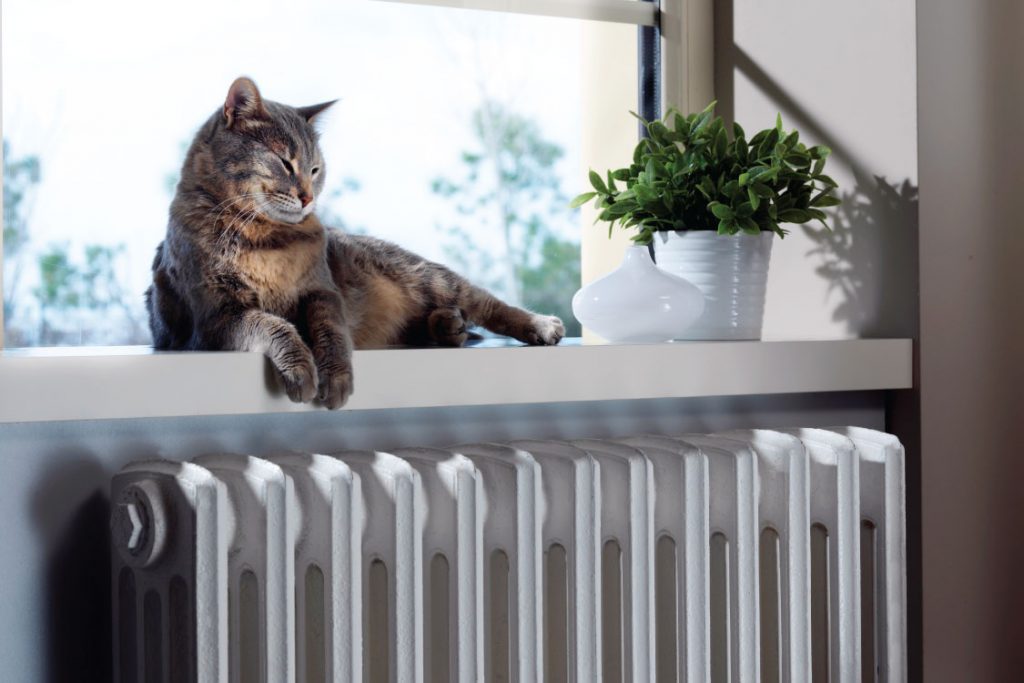Are Steam Radiators Dangerous
As a home heating device, radiators operating via steam have been around for many decades. In fact, they predate central heating systems relying on hot water-based radiators.
Granted, in many homes up and down the UK, hot water-powered systems have long been favoured over their steam counterparts, yet in some instances (and certainly in homes outside the UK; for instance, in the US) the latter remains very common. But why?
Well, the advantage with a steam system is it drives heat through pipes and to radiators without the need for pumping, which makes heat distribution easier – and cheaper – through large, tall buildings, such as inner city apartment blocks.
However, there is a drawback. Relatively speaking, a steam-based central heating system may be considered more dangerous than a hot water-based one – if it’s not properly maintained, that is. Obviously, these dangers can be avoided so long as inspection takes place regularly and worn out and faulty parts are repaired and replaced.

Old Radiators, Systems and Boilers
So what goes wrong with steam systems? Well, as many are ageing nowadays, some are at the mercy of wear and tear; specifically corrosion inside their pipework and boiler, usually unseen and unnoticed, thus potentially causing pipes to burst, blasting steaming vapour into rooms or even causing explosions.
Additionally, there can also be pressure build-up within the pipes and so stress on the entire system because ageing boilers are not being turned on and off automatically due to faulty thermostatic controls.
Or because a boiler may have become clogged up with chemicals and minerals or because radiator relief valves have worn out and refuse to open. In such aged and compromised systems, valves may also simply break off if they’re worn out, resulting again in a room filling with steam and suddenly resembling a piping hot sauna.
It’s worth mentioning too that should a system be leaking a large amount of steam or generating a lot of humid air via its radiators, it’s likely to foster mould in a room, which can prove to be a health hazard for young children, the elderly and people afflicted with allergies and respiratory conditions.
Again, however, it should also be stressed that, although the wearing out of components is common, these worst case scenarios are rare because steam systems are, by and large, effectively maintained.
Maintenance is Crucial
If you’re responsible for a steam system then it’s crucial you ensure it’s regularly inspected and kept in good condition. This should involve a professional expert examining the boiler, its radiators, its exposed pipes and its release valves, specifically for any worn or broken components.
They also should check the guide marks to be found on the boiler’s sight glass; these will inform them whether or not the boiler contains the correct amount of water. Moreover, they should insist on the area in which the boiler’s stored be kept free of all dust and debris – allowing the latter to build up here is just asking for trouble as they could become potential fire hazards.
All that said, there is, of course, an alternative to maintaining an old steam system. Depending on the constraints of the building it serves, it may be possible to upgrade it; that is, replace it with a more modern and (relatively) safer hot water-powered system, which would also be a good excuse for installing new, stylishly designed radiators.
And why not? Given there are so many different smart and elegant types to choose from today, including the likes of the towel rail radiator and the mirror radiator.
Rarely Dangerous
If installing a whole new central heating system isn’t an option, though, then it’s certainly possible to keep a steam system going; irrespective of its age, so long as it’s been well looked after.
To that end, such a system is unlikely to pose significant dangers to home occupants. Indeed, most injuries from a radiator tend to occur because children have foolishly touched its piping hot, metal surface rather than because steam has escaped or exploded out of the radiator owing to a broken or worn out valve or any other system components.
It is true, of course, that steam can burn skin worse than hot water because it may be superheated; however, children tend to get burned much more often by scalding bath water than by steam, while the severity of steam burns are often lower than those caused by fire.
Unlike steam systems and radiators then, fire – that potentially highly dangerous component found in every home – is surely the main one every household should remain ever vigilant about.

